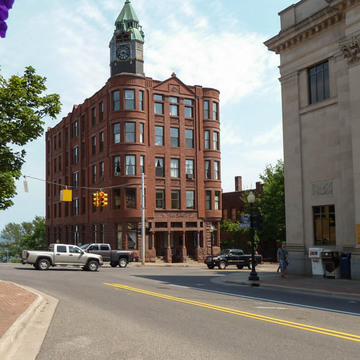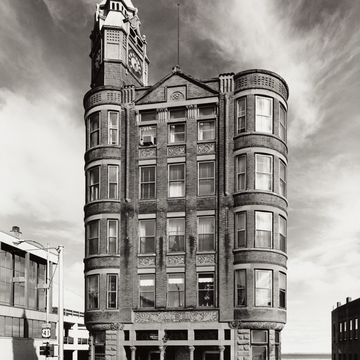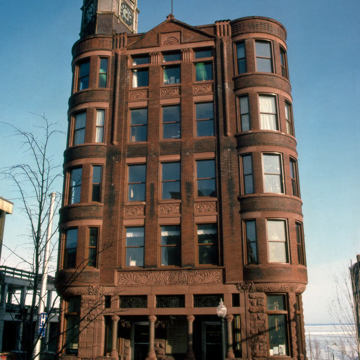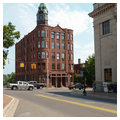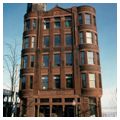The Marquette County Savings Bank was organized in 1890 by Nathan M. Kaufman (1862–1918), a merchant and speculator in mines, and by other Marquette businessmen as a convenience for small depositors and to facilitate real estate loans. Within four months, funds amounting to more than $100,000 were on deposit and the directors began plans for the present modern bank and office building. Located at the principal intersection of downtown Marquette, its site slopes east toward the lake and south toward the railroad's final approach to the ore docks. The steel-frame, fireproof building rises five stories at S. Front Street, six at E. Washington Street, and seven at the rear. The outer walls of the first floor are Rock River brownstone laid in rock-faced ashlar. Above that they are red pressed brick. Semicircular bays, the farthest northwest of which terminates in a three-faced clock tower, rise from the second story to the flat roof and flank the pedimented central entrance section. The recessed entrance is supported by polished granite columns and its stone spandrel panels are carved with stylized foliated designs. Elevator and ventilating shafts, staircase, and lavatories are arranged on the south wall to deaden the noise of the ore cars that once passed through the Jackson cut (the passage at the side of the building) to the docks. A Duluth firm with no previous connections in Upper Michigan designed the bank. At the time, according to the Marquette Mining Journal for April 18, 1891, it was termed “modern American with Gothic feeling,” but is, in fact, a fascinating commercialized version of Queen Anne.
You are here
Marquette County Savings Bank
If SAH Archipedia has been useful to you, please consider supporting it.
SAH Archipedia tells the story of the United States through its buildings, landscapes, and cities. This freely available resource empowers the public with authoritative knowledge that deepens their understanding and appreciation of the built environment. But the Society of Architectural Historians, which created SAH Archipedia with University of Virginia Press, needs your support to maintain the high-caliber research, writing, photography, cartography, editing, design, and programming that make SAH Archipedia a trusted online resource available to all who value the history of place, heritage tourism, and learning.


